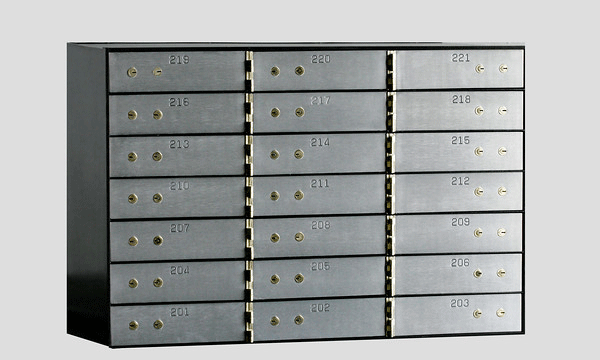You can think of memory as being like the safety deposit boxes in a bank vault:

Each box is numbered so you can find the right one and each box can hold some contents. In computer memory the number of the ‘box’ is referred to as the address and the contents being stored at that address are referred to as the value.
Here’s a diagrammatic representation of some hypothetical and somewhat simplified computer memory:
Here, we’ve got five memory locations (the rounded rectangles numbered 1 to 5 in the top left corner) each of which is the equivalent of a safety deposit box in our bank vault.
The memory at address 1 (the safety deposit box with the number 1 on the door) contains the value 231 and the memory at address 3 (the safety deposit box with the number 3 on the door) contains the value 34 and likewise for the other memory locations.
Well sure but…
- How come I’m seeing decimal numbers stored at these memory addresses? I thought computers only understood 1s and 0s.
- What are these 0x blah blah addresses I keep seeing?
- How come the addresses I’ve seen elsewhere go up in fours (or eights or some other number) rather than one by one?
- OK But what about the electronics? What’s really going on here?